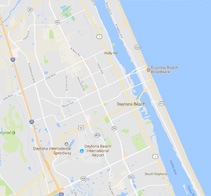News Archives
Sea turtle nests in Volusia County break a record.
Written by Kristen Schmutz
Belden Communications News
We are two months into turtle season in Volusia County, which runs from May 1 to October 31; and our beaches are seeing a record-breaking number of sea turtle nests (approximately 1,106) on County maintained beaches, half of them being in New Smyrna Beach.
According to a release, in a typical year, about 500 sea turtle nests are laid on Volusia County’s beaches, and that number increased to 984 in 2019, then dropped a bit to 902 in 2020 and 780 in 2021 before climbing sharply this year. Similar trends are being observed on other nesting beaches in the state.
Once the eggs in the sea turtle nests begin to hatch, thousands of hatchling sea turtles will make their way to the ocean, an uncertain trek that can be fraught with perils, including disorienting lights from beachfront homes, as well as trash and holes left by beachgoers.
Volusia County staff and volunteers are busy marking and monitoring nests, but they need the public’s help in ensuring a safe passage from nests to the ocean.
“We ask beachgoers to make sure the beach is dark, clean, and flat at night so hatchlings can find their way offshore to the floating sargassum seaweed where they will spend the first portion of their lives,” said Jennifer Winters, Volusia County’s protected species manager.
A busy nesting season leads to a busy washback season as many young turtles will be washed back to shore when summer storms send seaweed hurtling to the beaches.
“Baby turtles blend in with the seaweed, making them difficult to spot,” Winters noted. “Tragically they do not have the energy to make it back offshore without help, and they may die of dehydration or predation if they are left on the beach.”
The Marine Science Center takes in washback turtles, where they are treated and returned to the ocean by boat when they are strong enough to swim.
“If you find a washback or hatchling on the beach that is in imminent danger, do not put it back in the ocean,” Winters stressed. “Instead, contact Beach Safety for further instruction. These animals are often exhausted and can barely lift their heads to breathe. Holding them in water or putting them in the ocean can be fatal.”
Winters encourages people to follow these tips if they find a washback sea turtle:
- Make sure the turtle is out of harm’s way. Do not take the turtles home.
- Provide shade over the turtle and determine your exact location. The address, building name, street name, or GPS location are most helpful.
- Immediately notify Beach Safety at 386-239-6414. Between 7 p.m. and 7 a.m., call the Volusia Sheriff’s Office at 386-248-1777, ext. 6.
- Keep the turtle in a quiet, dry, shaded area – even if you think it’s dead. Staff from Beach Safety or a partner organization will coordinate with you to collect the turtle.
Volusia County’s Environmental Management Division has trained a team of Washback Watchers to comb the beach each day as fresh seaweed washes in during the washback season, which lasts from August through November.
For more information on nesting numbers, how to get involved, or to be placed on the list for next year’s training classes, visit www.volusiaseaturtles.org.



